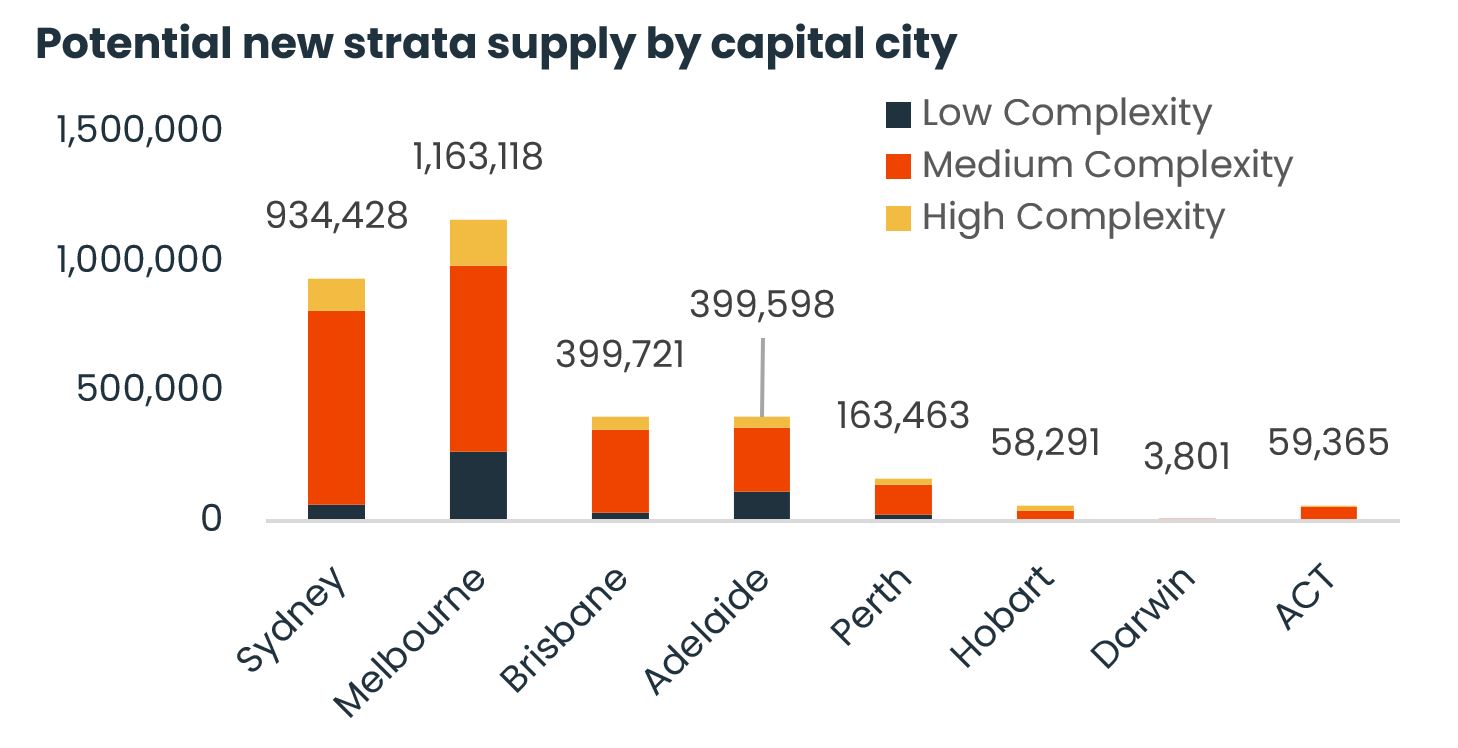New analysis has identified the potential to build more than three million additional strata units over almost 1.3 million sites across Australia’s capital cities, providing one potential solution to Australia’s growing housing crisis.
Of those units identified, almost 500,000 (16%) are situated on ‘low complexity’ sites without any material slope, heritage rules or the risk of a hazard such as bushfire or flooding. The analysis excludes high-rise and mixed-use opportunities, with the average number of potential units per site at just 2.5.
The largest number of sites were identified in Melbourne, with more than 472,000 lots and the potential to deliver almost 1.2 million new strata units, followed by Sydney with just under 351,000 sites and the potential for more than 934,000 new units to be built.
The report ‘The Missing Middle: The Greatest Opportunity for Medium-Density Development’, developed in partnership between CoreLogic and Archistar, a global leader in AI-driven property solutions, assessed the development potential of capital city land that doesn’t currently have a strata development and where local regulations allow for higher density dwellings.
The analysis shows more than half (57%) are within 2km of an existing train station, offering important transport links for commuters while also leveraging the significant capital investment in transport infrastructure.
CoreLogic’s research director, Tim Lawless, said the National Cabinet had its work cut out for it to deliver on its commitment when it comes to new housing.
“The challenge of delivering well-located new housing supply has been laid down by the National Housing Accord.”
“With a target of 1.2 million new ‘well-located’ homes nationally, all tiers of government are likely to be focussed on identifying and fast-tracking strategic development opportunities.”
“Governments are looking for ways to maximise opportunities for new well-located housing with a focus on strategic densification near transport nodes, maximising infill targets and ensuring an equitable supply of affordable housing options.”
“Importantly, this analysis isn’t identifying or recommending high-rise apartments as a solution to the housing crisis. It identifies opportunities for low-rise strata units that would typically take the form of townhouses, duplexes or triplexes.
“This style of infill development is often more sympathetic to the local character and tends to encounter less resistance from local residents who are often wary of higher densities.”
Archistar co-founder Dr Benjamin Coorey added: "The ‘Missing Middle’ report identifies significant opportunities within our urban areas to address housing shortages through more diverse, medium-density developments. These findings provide a crucial foundation for future planning and policy development across Australia."
"This research highlights the latent capacity for medium-density housing solutions in urban areas, demonstrating the importance of aligning design innovation with planning frameworks to achieve sustainable growth."
"Understanding the potential for the ‘Missing Middle’ is a vital step towards tackling Australia’s housing challenges. The report underscores the need for data-driven approaches to maximise underutilised land and optimise urban planning outcomes."
To read the full report, visit: https://www.archistar.ai/archistar-intelligence/
